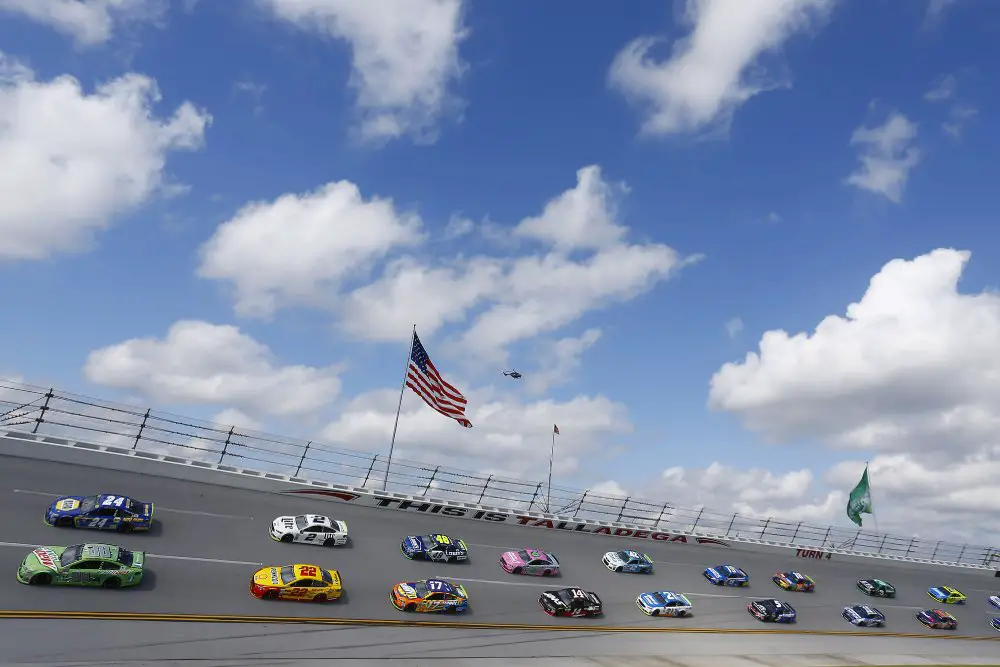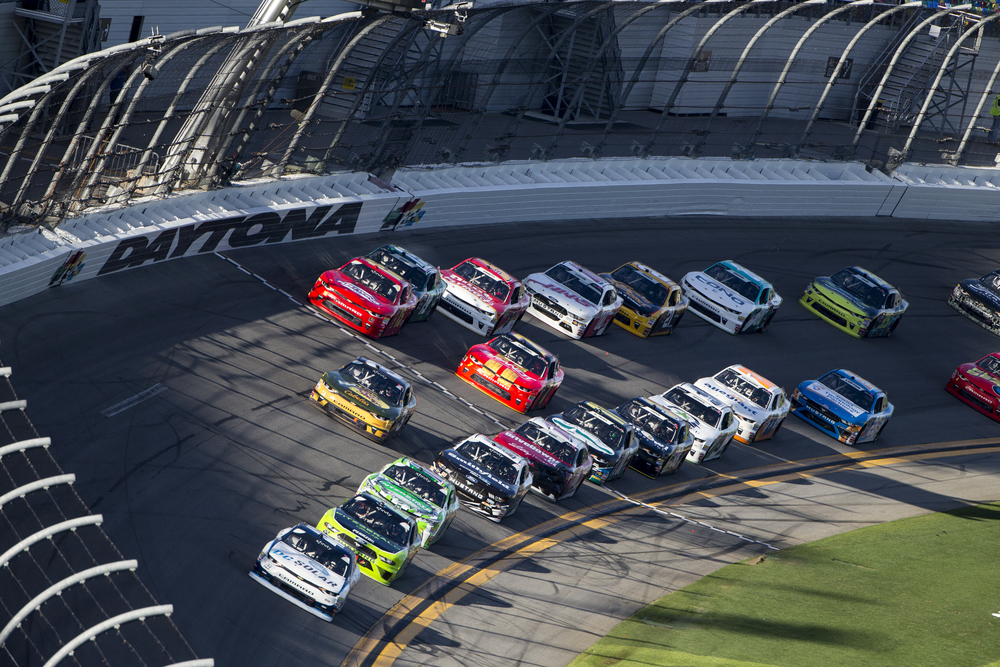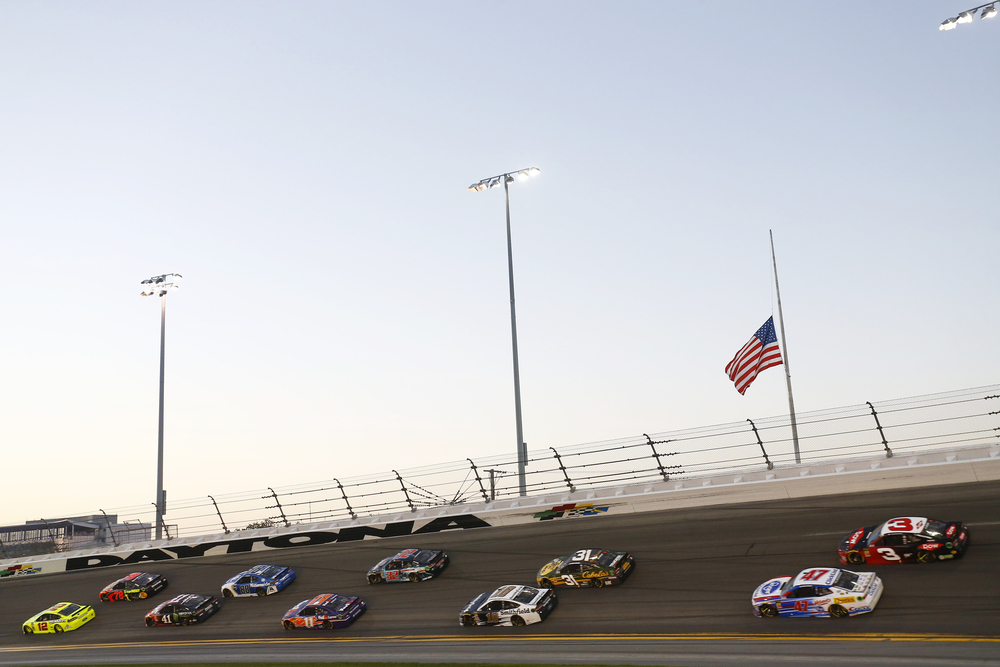Banking in NASCAR has nothing to do with withdrawing or depositing money and everything to do with how fast drivers can take corners and turns. The fastest tracks have the steepest banks, and the physics of well-designed inclines can make a huge difference in how fast a driver can complete a circuit.
Key Points:
- Banking is the angle of turns on a track that allows cars to drive at full throttle while cornering.
- Talladega Superspeedway has the highest banking at 33°, with Daytona International Speedway and Bristol Motor Speedway having 31° and 30°, respectively.
- Atlanta Motor Speedway and Darlington Raceway are two raceways that have been refurbished with steep banking in order to provide a safer and faster course for drivers.
As drivers hit the corners, the road meets them at an angle that allows full-throttle turns and passing by skilled and courageous racers.
But the science behind steep banks hasn’t always been understood, and the prohibitive costs of adding banks to every turn lead to some older tracks not having adequate banks for the fastest racing, whether a 1.5-mile track, a 2-mile track, or the longer superspeedways banking can make races more interesting. Read on to find out which NASCAR tracks have the steepest banking.
What are Steep Banks in NASCAR?
Banks are sloped turns that allow cars to stick to the tracks around corners with little need to reduce speed. High degrees of banking on modern NASCAR oval tracks even allow for full-throttle acceleration and passing as drivers cut inside and move past lead drivers. Newly-formed tracks that consider the physics of banking help drivers keep high cornering speeds and make for an exciting race.
Steep banks have a high degree of banking and let cars push down with extra downforce as they fly around. Turns with high degree banking are preferred for high-speed races, and legendary banking techniques have accounted for some racer’s career victories.
The most recognizable tracks have maximum banking, and that is why they have become some of NASCAR’s most well-known races.
Which Tracks Have the Steepest Banks?
Some tracks were built with banking in mind, others were refurbished to be built better and bring more enjoyment to racers and fans. Whatever the reason, steep banks make for fast races, and that is even more exciting for spectators everywhere.
Below are 5 of the tracks with the steepest degrees of banking.
Talladega Superspeedway
The longest oval and one of the best-built tracks in NASCAR, this track has higher banks than Auto Club Speedway, Indianapolis Motor Speedway, and all the other speedways in the series.
Stock car racing began on the ovals, and even with dirt tracks and road track races becoming popular, the most watched tracks are the speedways. No track, not even Winchester Speedway, Chicagoland Speedway, Martinsville Speedway, or Ontario Motor Speedway, comes close to Talladega’s 33° banked turns.
Daytona International Speedway
One of the earliest banked tracks with full-throttle racing in mind, this international speedway is designed so well that restrictor plates are required to keep cars under 200mph. Banked speedways provided some of the most intense racing and host NASCAR’s fastest 500-mile race as well as the most famous race in motorsport history, the Daytona 500.
This track has banks of 31° and lets drivers go all out on every corner, making it one of the fastest circuit races.
Bristol Motor Speedway
It is the fastest half-mile track in NASCAR, with lap speeds of less than 15 seconds. The corners have up to 30° of banking, so cars never need to slow down and can make the most of the short track size.
In the 1980s, banks were claimed to be 36°, but those claims were refuted, and now modern measurements show 22 to 27° banks at Bristol Motor Speedway as well as other updated half-mile track elements.
Atlanta Motor Speedway
Since creating steeper banking is one of the best ways to reinvigorate a less than steller track, these kinds of improvements have become more popular.
The newly refurbished Atlanta Motor Speedway got steeper banks to allow higher race speeds and also creates a much safer track to race on. Now the track boasts 28° maximum banking allowing for high-speed corners and a more interesting course for drivers and fans alike.
Darlington Raceway
A unique track with a distinct egg-shaped Darlington raceway is known to be difficult to race on. Not the longest track nor the fastest; it gives drives 25° banks that help create fast corners and makes the course more interesting.
The elongation of the oval makes crashes more likely at the apex of each oval, and the curved straightaways provide challenges for drivers looking to pass lead racers.
Degrees of Banking in NASCAR
A road course and street races naturally will have little to no banking as it is not a course built by engineers for racing, but just an intense area of road racers enjoy running on. Superspeedways, on the other hand, are built for speed, and turns are the number one reason cars slow down; high degrees of banking make this unnecessary and let racers drive in the red around every corner.
Following are some courses and the degrees of banking they commonly have.
| Type of Bank | Bank Size | Track |
| No Bank | 0° | Road Courses |
| Shallow Bank | 0-10° | New Hampshire Motor Speedway and Indianapolis Motor Speedway |
| Medium Bank | 11-20° | Kansas Speedway |
| Steep Bank | 21-35° | Darlington Raceway and Talladega Superspeedway |
Why Steep Banking Matters to Drivers?
Drivers count on steep banking to keep their tires firmly in contact with the road. Although cars and tires are built to be as aerodynamic as possible while generating as much downforce as possible high-speed turns tend to make cars want to spin or fly.
Centrifugal force lifts the passenger side of the car as the driver side turns into the corner and will cause the rear to slide out and the car to spin or move into an outer lane. But banks can help prevent this.
When there is a steep bank, the car has no option to lift up as the road rushes to meet the tires keeping racers firmly in their lane and on the track. Having tracks with varying degrees of banking on each turn makes it more challenging for drivers who have to adjust their top speed accordingly.
With steep banks, drivers can really go fast and trust that they will not spin out on the oval turns.
Can Shallow Banks be Dangerous?
Banks that shallow shouldn’t be dangerous as drivers will adjust their speed accordingly. While not dangerous, it does make it necessary for drivers to slow down and can create bottlenecks or other crash-inducing conditions.
Shallow banks do not provide the support for high-speed cornering that steeper banks do, and if drivers miscalculate, cars can slide out and crash. Generally, steep banks are safer for NASCAR races than shallow or no-bank turns.




